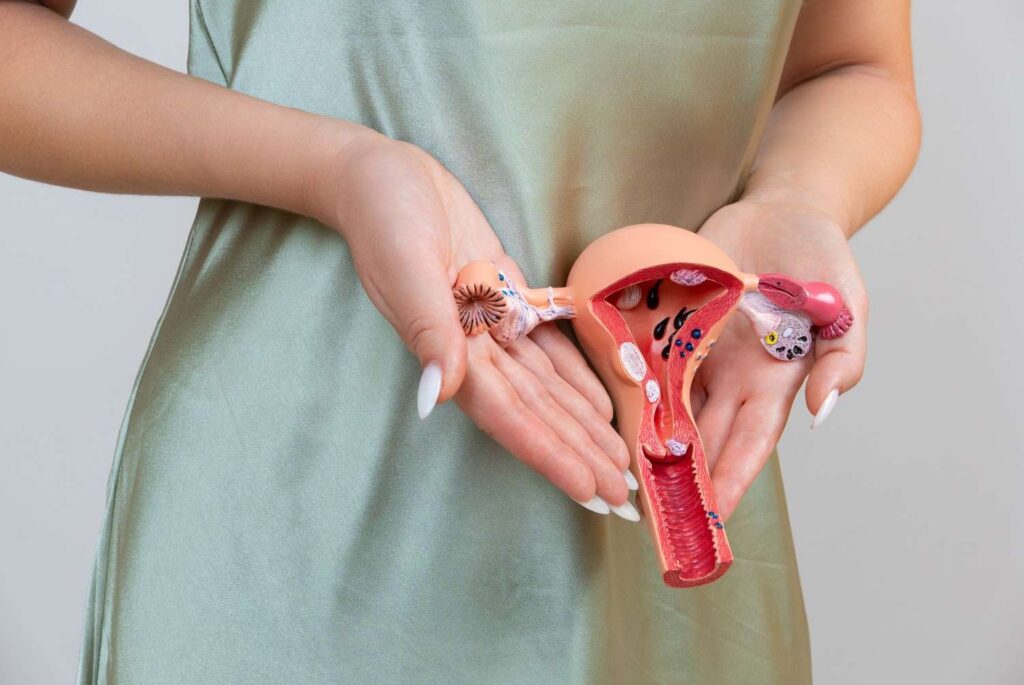Pyosalpinx is a gynaecological condition characterised by the accumulation of pus in the fallopian tube, leading to infection, inflammation and severe discomfort. This condition is often a complication of pelvic inflammatory disease (PID) and can significantly impact a woman’s reproductive health if not treated promptly. Understanding the causes, symptoms, and treatment of pyosalpinx is crucial for early diagnosis and effective management.
What is Pyosalpinx?
Pyosalpinx is a condition in which one or both fallopian tubes become filled with pus due to an infection. It is a severe form of salpingitis (inflammation of the fallopian tubes) and typically arises from untreated or poorly managed pelvic infections. The presence of pus can lead to tube blockage, severe pain, and complications related to fertility.
Causes of Pyosalpinx
Pyosalpinx generally develops due to bacterial infections that spread to the fallopian tubes. Some of the primary causes include:
- Pelvic Inflammatory Disease (PID): The most common cause, usually triggered by sexually transmitted infections (STIS) like Chlamydia or Gonorrhea.
- Post-surgical infections occur after gynaecological surgeries or procedures like dilation and curettage (D&C).
- Intrauterine Device (IUD) Complications: Rarely, IUDS can introduce bacteria, leading to infections.
- Endometriosis: Severe cases may lead to secondary infections in the fallopian tubes.
- Tuberculosis (TB) of the Genital Tract: In rare cases, TB can spread to the reproductive organs, causing pyosalpinx.
Risk Factors Associated with Pyosalpinx
Certain factors can increase a woman’s risk of developing pyosalpinx, including:
- Multiple Sexual Partners: Higher risk of sexually transmitted infections (STIS).
- History of Pelvic Inflammatory Disease (PID): Recurrent infections increase the likelihood of pyosalpinx.
- Unsafe Sexual Practices: Lack of barrier protection during intercourse.
- Previous Abdominal or gynaecological surgery: Post-surgical infections can lead to pyosalpinx.
- Impaired Immune System: Conditions like diabetes or autoimmune disorders can increase infection risk.

Symptoms of Pyosalpinx
Women with pyosalpinx may experience a range of symptoms, including:
- Pelvic Pain: A constant, dull, or sharp pain in the lower abdomen.
- Abnormal Vaginal Discharge: Foul-smelling, yellowish, or greenish discharge.
- Fever and Chills: Indicating an active infection.
- Pain During Intercourse (Dyspareunia): Due to inflammation.
- Menstrual Irregularities: Irregular or painful periods.
- Infertility: In severe or untreated cases, the fallopian tube may become permanently damaged.
Diagnosis of Pyosalpinx
Diagnosis of pyosalpinx typically involves:
- Medical History and Physical Examination: To identify symptoms and possible risk factors.
- Ultrasound Imaging: A transvaginal ultrasound can reveal pus-filled fallopian tubes.
- Laparoscopy: A minimally invasive procedure to directly view and assess the fallopian tubes.
- Laboratory Tests: Blood tests to detect elevated white blood cell counts (indicating infection).
- Microbial Culture Tests: Identifying the specific bacteria causing the infection.
Treatment of Pyosalpinx
Effective management of pyosalpinx focuses on eliminating the infection and preserving reproductive health. Treatment options include:
- Antibiotic Therapy: Broad-spectrum antibiotics to combat the infection.
- Drainage Procedures: Minimally invasive techniques to remove pus.
- Laparoscopic Surgery: In severe cases, surgical removal of the affected tube (salpingectomy) may be necessary.
- Pain Management: Analgesics to relieve discomfort.
- Fertility Counselling: For women with fertility concerns.
- Lifestyle Modifications: Maintaining good hygiene and healthy sexual practices.
Prevention of Pyosalpinx
Preventing pyosalpinx involves reducing the risk of pelvic infections:
- Safe Sexual Practices: Using protection and having regular STI screenings.
- Prompt Treatment of Infections: Early management of PID and other reproductive infections.
- Regular Gynaecological Checkups: These are for the early detection of any abnormalities.
- Maintaining Hygiene: Proper genital hygiene reduces infection risk.
- Vaccination: Getting vaccinated for HPV or other relevant infections.

Complications of Pyosalpinx
If left untreated, pyosalpinx can lead to serious complications, including:
- Chronic Pelvic Pain: Persistent discomfort due to inflammation.
- Infertility: Due to permanent damage to the fallopian tubes.
- Ectopic Pregnancy: If a damaged tube remains partially functional.
- Pelvic Abscess Formation: A severe, life-threatening infection.
- Sepsis: A potentially life-threatening systemic infection.
Conclusion
Pyosalpinx is a serious condition that requires timely diagnosis and treatment to prevent complications. Women experiencing symptoms like pelvic pain, abnormal discharge, or menstrual irregularities should seek immediate medical attention. With proper medical care, pyosalpinx can be effectively managed, preserving reproductive health and overall well-being.
If you are experiencing symptoms of pyosalpinx or have concerns about your reproductive health, it is essential to seek expert care. At Boon IVF, Hyderabad, our experienced specialists offer comprehensive diagnosis and personalized treatment options to help you maintain your reproductive health.
FAQS About Pyosalpinx
1. Can pyosalpinx cause infertility?
Yes, if left untreated, pyosalpinx can cause permanent damage to the fallopian tubes, leading to infertility.
2. Is pyosalpinx always caused by sexually transmitted infections?
No, while STIS are a common cause, pyosalpinx can also result from post-surgical infections, tuberculosis, or other pelvic infections.
3. Can pyosalpinx be treated without surgery?
In some cases, antibiotics may be sufficient, but severe cases may require surgical intervention.
4. What is the difference between pyosalpinx and hydrosalpinx?
Pyosalpinx is pus-filled fallopian tubes due to infection, while hydrosalpinx is fluid-filled tubes without infection.
5. How can I prevent pyosalpinx recurrence?
Practice safe sexual habits, get regular checkups, and seek prompt treatment for any pelvic infections.


